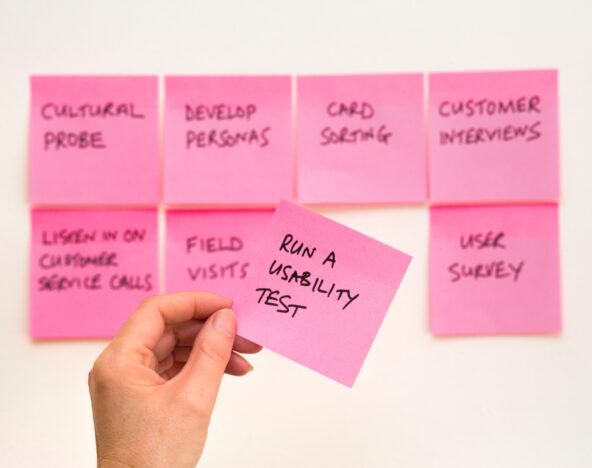Software Testing Modernization: Why Your Business Needs It Now
With the proliferation of software and the ‘there’s an app for that’ mentality, software testing has become central to business revenue streams and success. Quality is key for any software, and testing ensures that quality is upheld. Consequently, it’s imperative that testing strategy and QA are primary components of the software development lifecycle.
Too often, testing is completed in silos where comprehensive insights are difficult to glean, or worse, it’s an afterthought altogether. This can lead to the release of low-quality software, costing businesses customers and revenue.
Moving Toward Modernized Testing
Software testing modernization shifts away from outdated, disparate testing tools and processes towards more Agile methods that deliver greater efficiency, better products, and clearer insights. This modernization requires organizations to closely examine their current testing practices and evolve them across three main categories: process, tools, and people. While modernizing testing requires an upfront investment and buy-in from IT and C-suite leadership, it proves to be worth the effort. Organizations that modernize their software testing often see a reduction in testing costs, reduced risks associated with software quality, and an improvement in time to market.
Better Software Boosts Business Value
The primary goal of testing modernization is to deliver high-quality products that satisfy customer needs. Today’s consumers demand software that functions correctly, is easy to use, secure, and performs across multiple devices. Additionally, software needs to be released earlier and more often to stay competitive, requiring a more flexible and fluid approach to testing.
Modernizing testing addresses these needs and offers numerous additional business values. Beyond faster delivery of higher quality software and improved customer satisfaction, it helps enterprises reduce testing costs and redundancy, detect defects earlier, and increase efficiency, coverage, and quality. It also enhances Agile practices, moving towards a continuous testing model.
Modernizing software testing is essential for organizations aiming to keep pace with the rapidly evolving technological landscape and growing customer expectations. Key drivers for testing modernization include the integration of testing within Agile frameworks, the adoption of continuous testing through DevOps, staying current with advanced technologies, and accelerating processes with automation. Each driver addresses specific challenges and opportunities, ensuring that software development remains efficient, effective, and capable of delivering high-quality products. Understanding and implementing these drivers can significantly enhance a company's ability to meet market demands and achieve strategic objectives.
Key Driver:
Integrating Testing with Agile

Key Driver:
Integrating Testing with Agile
A key driver of modernizing testing is the desire to improve testing within Agile frameworks. Many companies already operate or wish to operate using Agile. However, testing often gets caught in a transition phase from Waterfall to Agile, resulting in a "Scrumafall" approach where testing is still largely delayed until the end of a sprint. Continuous testing within Agile helps avoid incomplete testing phases, which can lead to the release of buggy products.
Key Driver:
Integrating Continuous Testing with DevOps

Key Driver:
Integrating Continuous Testing with DevOps
Another driver is DevOps, which promotes continuous testing throughout the software lifecycle. DevOps facilitates the creation of new builds daily or hourly, allowing testing activities to shift left within a sprint. This integration results in faster delivery of higher quality software, better detection of quality issues, and reduced risks of project delays.
Key Driver:
Staying Current with Modernized Technology

Key Driver:
Staying Current with Modernized Technology
Technology modernization is another key driver, as many enterprises replace legacy applications with newer technologies. These new applications need thorough testing, including software integrations and data conversions. Modern testing practices and tools should be used to build a reusable test repository for the initial launch of the new application and its subsequent releases.
Key Driver:
Accelerating with Automation

Key Driver:
Accelerating with Automation
Automation is often the primary focus of testing modernization. Leveraging test automation helps rapidly scale testing while overcoming issues that slow down development and deployment. It can reduce testing costs by freeing up manual testing hours and prevent bottlenecks in the development process. To create a strong business case for test automation, consider time-to-market, quality/risk, and a broader assessment of ROI.
How to Modernize Your Testing Approach
Regardless of your current methodology, modernizing your testing approach requires the right process maturity, tools, and people. The more agile your practices, the more frequently you can run tests and provide immediate feedback on software quality.

The more agile you are, the more frequently you can run tests, and the easier it becomes to provide software engineers immediate feedback on the quality of the software under development.
Process Improvement
Key drivers to testing modernization, such as shift-left testing, Agile improvements, continuous testing, and test automation, fall under process improvement. To determine process improvements, consider your business goals and current inhibitors to testing efficiency. Embracing Agile testing is crucial, with prerequisites such as user story definitions that include testing, strong CI/CD processes, and tester involvement in every aspect of the Agile sprint.
Test automation accelerates software delivery times, reduces the need for manual testing resources, and allows focus on value-added tasks. A successful automation process includes clear manual test cases, best practices for automated test design, and maintenance of automated test assets.

With the variety of tools available, it’s best to develop an automation strategy and evaluate each option to select the right fit for your organization.
Tool Selection
The tools you use reflect your modernization status. Modern defect management tools like Jira facilitate clear communication between engineers, while test management tools like Zephyr and Microfocus ALM help maintain reusable test cases. Test automation tools vary from open-source options like Selenium to commercial platforms like Tosca, each with different capabilities and requirements.
Modern performance testing tools, such as JMeter for open-source and Neoload for commercial options, are essential for simulating concurrent users and measuring application performance under load.

Testing modernization provides QA and testing professionals an opportunity to grow their skills and careers.
People
While we embrace integrating current testing staff into Agile teams to rapidly deliver quality software, we believe in the value of having true software test experts rather than interchangeable roles. Software engineers should develop unit tests to verify their code, but testing functions, features, business workflows, data validation, permissions, integrations, device compatibility, and accessibility are best suited for dedicated test engineers.
Adapting your team to a modern testing approach requires honing skills specific to Agile and automation. This means testers will have more sophisticated responsibilities and technical skills, including the ability to:
- Define functional and integration test strategies
- Streamline regression testing
- Test both APIs and UIs
- Perform data integrity validation using SQL and other methods
- Verify user workflows across complex systems with end-to-end testing
- Conduct exploratory testing
- Plan and execute performance and load testing
- Automate tests using coded frameworks or low-code platforms
- Assist with acceptance testing, especially data preparation
Modernizing testing provides QA and testing professionals with opportunities to grow their skills and advance their careers.
When to Modernize
The optimal time to modernize is during technology transformations. Any software transformation effort should include a testing strategy. However, if no significant technological investments or transformations are planned soon, it may still be time for an update.
To decide whether it’s time to modernize testing, start with an assessment. Establish a baseline of your current testing maturity, evaluate it against modern practices, identify gaps, and create a future vision that outlines priorities, risks, and a roadmap for your testing modernization effort.
Recent Trends for Software Testing Modernization
Recent reports from Gartner, Deloitte, Forbes, and McKinsey highlight several trends in software testing modernization:
- AI and Machine Learning Integration: AI and machine learning are increasingly used to enhance test automation, improve defect detection, and predict testing outcomes. These technologies help create smarter, more efficient testing processes.
- Shift-Left and Shift-Right Testing: Beyond just moving testing earlier in the development cycle (shift-left), modern practices also incorporate shift-right testing, which involves testing in production environments to gather real-world feedback and ensure continuous quality.
- DevSecOps: Security is becoming integral to DevOps practices. DevSecOps emphasizes integrating security testing throughout the CI/CD pipeline to identify vulnerabilities early and ensure compliance.
- Cloud-Based Testing: Cloud platforms offer scalable testing environments, allowing teams to run extensive tests without investing in physical infrastructure. This flexibility supports faster and more comprehensive testing.
- Collaborative Testing Tools: Tools that support collaboration and communication among distributed teams are critical, especially with the rise of remote work. These tools enhance coordination and streamline testing processes.
By staying abreast of these trends and continuously evolving your testing strategies, you can ensure that your software testing practices remain modern, efficient, and effective in delivering high-quality products that meet customer expectations and drive business success.



